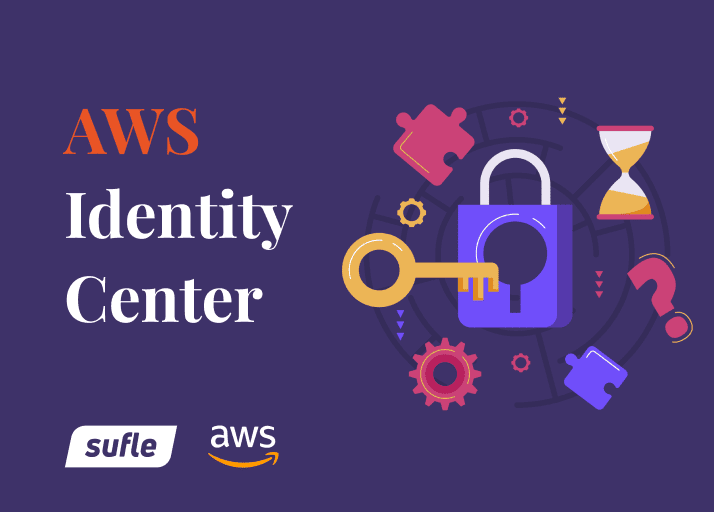Modern serverless applications help teams build and iterate faster but they also introduce new complexities, especially in observability, reliability, and operational consistency. Implementing best practices like structured logging, distributed tracing, custom metrics, idempotent processing, and safe retries often requires repetitive, boilerplate code in every Lambda function.
AWS Lambda Powertools is an open-source, opinionated toolkit designed to solve that problem. It provides a set of lightweight, production-ready utilities that help developers implement serverless best practices with minimal code. These utilities include structured logging, metrics collection, distributed tracing, input validation, idempotency handling, batch processing, and feature flag evaluation, all aligned with the AWS Well-Architected Serverless Lens.
By adopting Powertools, teams can:
Eliminate boilerplate and focus on business logic,
Improve observability and resiliency across their Lambda functions,
Maintain consistency in production environments across multiple teams and runtimes.
Originally launched for Python in 2020, Powertools is now available for Node.js, Java, .NET, and more. It is actively maintained by AWS, distributed under the permissive MIT-0 license, and trusted by organizations building secure and scalable serverless applications.
In this guide, we'll explore how Powertools helps implement best practices across the following key areas:
Observability: Logging, Tracing, Metrics
Reliability: Idempotency and Batch Processing
Maintainability: Input Parsing and Feature Flags
Let’s dive into how Powertools can improve your development workflow and simplify serverless operations.
Logging, Tracing, and Metrics (Observability)
Logging: Powertools’ Logger produces structured JSON logs out-of-the-box, making it easy to search and analyze in CloudWatch Logs. It automatically enriches logs with Lambda context (e.g., function name, request ID, cold start indicator) when you use the @logger.inject_lambda_context decorator. You can log messages and objects with logger.info() and include additional keys for context. Structured logging ensures consistency and improves debugging.
.
from aws_lambda_powertools import Logger, Tracer, Metrics
from aws_lambda_powertools.metrics import MetricUnit
logger = Logger(service="paymentService") # service name for context
tracer = Tracer(service="paymentService")
metrics = Metrics(namespace="MyApp")
@metrics.log_metrics # ensures metrics are published at function end
@tracer.capture_lambda_handler # traces this handler with AWS X-Ray
@logger.inject_lambda_context(log_event=True) # adds context and logs incoming event
def lambda_handler(event, context):
logger.info("Processing payment event")
# ... your business logic ...
metrics.add_metric(name="ProcessedPayments", unit=MetricUnit.Count, value=1)
return {"statusCode": 200}Tracing: The Tracer utility integrates with AWS X-Ray to provide distributed tracing for your functions. By decorating your handler (or specific functions) with @tracer.capture_lambda_handler (or @tracer.capture_method for internal functions), Powertools will automatically record trace segments, add annotations (like a ColdStart flag on first invocation), and propagate the trace context to downstream calls. This means you get end-to-end visibility of requests across services without manual instrumentation.
Metrics: Powertools’ Metrics makes it easy to collect custom CloudWatch metrics asynchronously. You can create a Metrics instance with a namespace (e.g., your application name) and use it to add metrics within your code. The @metrics.log_metrics decorator will automatically capture all added metrics and flush them in one go at the end of invocation in the CloudWatch Embedded Metric Format (EMF). This approach avoids multiple CloudWatch API calls and ensures your business KPIs (like ProcessedPayments or SuccessfulLogins) are recorded reliably with minimal overhead.
In distributed systems, Lambda functions may be invoked multiple times with the same event (due to retries or duplicates). The Powertools Idempotency utility helps guarantee that processing the same event more than once will not have additional side effects. It does this by storing a record of processed events (using a persistence layer like DynamoDB or Redis) and returning the previous result for duplicate inputs within a certain timeframe. Developers simply wrap their function with the @idempotent_function decorator and configure a persistence store. This ensures at-least-once event processing won’t lead to double-charging a customer or duplicate emails, for example.
from aws_lambda_powertools.utilities.idempotency import DynamoDBPersistenceLayer, idempotent_function
# Configure a DynamoDB table for idempotency record storage
persistence = DynamoDBPersistenceLayer(table_name="IdempotencyTable")
@idempotent_function(data_keyword_argument="event", persistence_store=persistence)
def process_order(event, context):
# Your order processing logic here
# (will execute only once per unique event payload)
handle_order(event)
return {"status": "processed"}
In the snippet above, subsequent calls to process_order with the same event will return the stored result instead of running handle_order again. This is crucial for event sources like SQS, SNS, or EventBridge that may deliver duplicate messages. (Note: You must create the DynamoDB table and grant the Lambda IAM permissions for this to work.)
AWS Lambda can receive a batch of records (e.g., from SQS, Kinesis, or DynamoDB Streams) in a single invocation. By default, if any record in the batch fails, the entire batch is retried, potentially duplicating successful records. Powertools’ Batch Processing utility helps you handle partial failures gracefully. It processes each record individually and reports to Lambda which ones failed, so only those are retried. This significantly reduces duplicate processing and makes your functions more resilient to bad records. Powertools provides a BatchProcessor that you can configure for your event source type and a record handler function for single items. For example, for an SQS event:
from aws_lambda_powertools.utilities.batch import BatchProcessor, EventType
processor = BatchProcessor(event_type=EventType.SQS)
def record_handler(record):
# Process a single SQS record (e.g., parse JSON and perform action)
payload = json.loads(record["body"])
process_message(payload)
def lambda_handler(event, context):
# Process batch of records; successes and failures handled internally
processor.process(records=event["Records"], record_handler=record_handler)
return processor.response() # returns appropriate batch item failure report
In this setup, the BatchProcessor will call record_handler for each record. If one record raises an exception, Powertools captures that failure and ensures it’s reported in the Lambda result correctly (using the ReportBatchItemFailures feature). Good records in the batch won’t be retried, while failed ones will be sent back to the queue for retry (or to a dead-letter queue after max attempts). Tip: It’s still recommended to combine this with the idempotency utility, so if a failed record is retried, your logic won’t duplicate work.
Parser (Input Validation)
Handling and validating input events can be tedious and error-prone. The Parser utility in Powertools uses Python data models (via Pydantic) to deserialize and validate event payloads or API inputs. Instead of manually digging into nested JSON, you can define a schema and let Powertools parse it into an object with typed attributes. This not only makes your code cleaner but also catches invalid inputs early. For example, if you expect a Lambda event with an order detail, you can define a model and parse it:
from aws_lambda_powertools.utilities.parser import BaseModel, parse
class OrderEvent(BaseModel):
order_id: str
quantity: int
price: float
def lambda_handler(event, context):
# Validate and parse the incoming event against the OrderEvent schema
order = parse(event=event, model=OrderEvent)
# If the event is missing fields or wrong types, a validation error is raised.
process_order(order.order_id, order.quantity, order.price)
return {"statusCode": 200}
Powertools Parser comes with pre-built models for common AWS events (API Gateway, S3 events, SNS, etc.), so you can directly parse those into typed models (for example, S3Event or APIGatewayProxyEvent). Using the Parser ensures you catch malformed input and work with Python objects instead of raw dicts, making your handler code more robust and clear.
Feature Flags
Feature flags (also known as feature toggles) enable safer deployments by allowing you to turn features on or off dynamically. AWS Lambda Powertools includes a simple rule-based Feature Flags utility to evaluate whether a feature should be enabled for a given invocation context. You might use this to gradually roll out a new capability for beta users or disable a feature in production without a full redeploy. Powertools’ FeatureFlags can load rules from external sources like AWS AppConfig, AWS Parameter Store, or a JSON file. Each feature has a default value and optional conditional rules. At runtime, you call feature_flags.evaluate() with the feature name and a context (e.g., user type, region, environment) to get a boolean answer.
from aws_lambda_powertools.utilities.feature_flags import FeatureFlags, AppConfigStore
# Assume feature flag configuration is stored in AWS AppConfig under application "MyApp"
store = AppConfigStore(application="MyApp", environment="prod", name="featureFlags")
feature_flags = FeatureFlags(store=store)
def lambda_handler(event, context):
# Determine if the "NewPaymentFlow" feature is enabled for this user
context_data = {"userTier": event.get("tier", "standard")}
if feature_flags.evaluate(name="NewPaymentFlow", context=context_data, default=False):
use_new_payment_flow(event)
else:
use_existing_flow(event)
In this snippet, NewPaymentFlow could be enabled only for users with "userTier": "beta" as defined in the AppConfig data. The Feature Flags utility ensures your code checks the flag at runtime and toggles functionality without modifying the code for each change. This is great for safe deployments, A/B testing, or regional feature rollouts in your serverless application.
When using AWS Lambda Powertools, keep these best practices in mind to maximize benefits and maintain clean architecture:
Initialize Globally: Instantiate the Logger, Tracer, Metrics, etc., as global objects (outside the handler) so they persist across invocations (when warm) and avoid repeated setup. This also captures cold start information automatically.
Use Consistent Service Context: Set the environment variable POWERTOOLS_SERVICE_NAME (and POWERTOOLS_METRICS_NAMESPACE for metrics) for each Lambda. This tags your logs, traces, and metrics with a consistent service/application name, making cross-function correlation and searching much easier.
Instrument Every Function: Adopt a standard wrapper for all your Lambda functions – enable logging, tracing, and metrics on each one using the decorators. This consistency ensures you don’t have “blind spots” in your monitoring and debugging.
Embrace Idempotency: For event-driven Lambdas (e.g., processing queue or stream events), design them to be idempotent. Use the idempotency utility for any function that might retry on errors or receive duplicate events. This prevents unintended side effects and makes your processing more resilient.
Handle Partial Failures: Combine the Batch Processing utility with DLQs (Dead Letter Queues). Let Powertools handle partial failures so one bad message doesn’t reprocess the whole batch, and send unprocessed messages to a DLQ for later inspection. This keeps your pipelines flowing smoothly even when occasional bad data is encountered.
Externalize Configuration & Flags: Store configuration and feature flag data in external services (Parameter Store, AppConfig, S3) rather than hard-coding. Powertools utilities (Parameters and FeatureFlags) can cache and retrieve these easily. This practice makes your functions more flexible and reduces the need for code changes on configuration updates.
Conclusion
AWS Lambda Powertools equips serverless teams with battle-tested utilities to implement logging, tracing, metrics, idempotency, input validation, and feature toggles effortlessly. By leveraging these tools, developers can rapidly build observant, resilient, and manageable Lambda functions, focusing on delivering business value instead of reinventing solutions for common concerns. Embrace Powertools in your serverless projects to boost development velocity and operational excellence from day one.
Pro tip: If you’re new to Powertools, start small – maybe add the Logger to a Lambda and see the structured logs in action. Then layer on Metrics and Tracer, and explore the other utilities as needs arise. Many developers echo the sentiment, “I wish I had known about this earlier”, because once you use Powertools, it’s hard to imagine going back to writing all that scaffolding yourself. Powertools truly exemplifies the idea of working smarter, not harder, in the serverless world.
Happy serverless building!
Sources:
Tom McCarthy – Simplifying serverless best practices with Lambda Powertools (AWS Open Source Blog, 2020) aws.amazon.comaws.amazon.com
Julian Wood – Introducing AWS Lambda Powertools for .NET (AWS Compute Blog, 2023) aws.amazon.comaws.amazon.com
Pascal Vogel – Implementing idempotent AWS Lambda functions with Powertools (TypeScript) (AWS Compute Blog, 2023) aws.amazon.comaws.amazon.com
Alexander Schüren – Validating event payload with Powertools for AWS Lambda (TypeScript) (AWS Compute Blog, 2025) aws.amazon.comaws.amazon.com
Renato Losio – AWS Lambda Supports Powertools for .NET to Simplify Observability (InfoQ News, 2023) infoq.cominfoq.com
AWS Lambda Powertools Documentation (Python v2) – Idempotency, Batch Processing, Feature Flags, etc. docs.powertools.aws.devdocs.powertools.aws.dev
Ran Isenberg – AWS re:Invent 2024: My Serverless Takeaways (Blog Post, Dec 2024) reinvent.awsevents.com (session references)
Steve Rice & Ran Isenberg – How CyberArk Implements Feature Flags with AWS AppConfig (AWS Cloud Ops Blog, 2023) aws.amazon.com
Want to make your serverless applications more observable, resilient, and manageable? Contact Sufle today to implement the best practices offered by AWS Lambda Powertools!
Ceren is an AWS Certified Growth Marketing Professional Manager with technical and sales expertise, passionate about leveraging cloud technology for business growth. She is committed to continuous learning to drive success in AWS services and solutions.
We use cookies to offer you a better experience.
We use cookies to offer you a better experience with personalized content.
Cookies are small files that are sent to and stored in your computer by the websites you visit. Next time you visit the site, your browser will read the cookie and relay the information back to the website or element that originally set the cookie.
Cookies allow us to recognize you automatically whenever you visit our site so that we can personalize your experience and provide you with better service.


